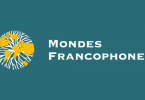Critics may forever associate Charles Palissot with the reactionary bent in his castigations against Diderot or his epistolary diatribes against Rousseau. During the third quarter of the eighteenth century, Palissot achieved modest notoriety as a chief proponent of the Counter-Enlightenment and unabashed critic of the Encyclopedic movement in France. Olivier Ferret’s critical edition of Palissot’s most popular (and polemic) work, La comédie des Philosophes, refuses (with good reason) to pull the opportunistic Palissot out of critical status quo and place him on any sort of philosophical or aesthetic pedestal. Nevertheless, Ferret’s incisive bibliographic and manuscript research nuances overarching binarisms between the philosophes and the Counter Enlightenment and provides the reader with interesting biographical and contextual anecdotes that surrounded the great philosophical quarrels of the 1750s.
Although many critics have often associated the Counter-Enlightenment with both religious fervor and obscurity, Ferret points out that Palissot’s anti-philosophie stemmed more from career advancement and opportunity rather than strong moral or religious beliefs (15). Nevertheless, Palissot’s diminished religious tendencies do little to hide his intense disdain for the philosophe movement. Rather than attack specific works from the pens of Rousseau, Diderot, Helvétius, or Grimm: Palissot groups individual philosophical tendencies into a coherent (and enemy) research program-the philosophe movement. In Les Philosophes, Palissot reduces the lumières to an egotistical gang of corrupted (and corrupting) demagogues that are quick to criticize any person or institution, save those under the safe umbrella of philosophie. Palissot’s comedy culminates with a remarkably pantomimic scene, where Crispin (the antiphilosophical valet to the protagonist), mocking the famous citoyen de Genève, crawls out onto stage on all fours. The surrounding philosophes are amazed at Crispin’s proximity to the state of nature and proclaim the tricky Crispin (he is actually joking, and trying to prove the philosophes ridiculous) a pure act of philosophie.
As Ferret points out, Palissot’s style is little more than a pastiche of Molière and one could never confuse his dramaturgy with more inventive writers of the 1750s and 1760s such as (unfortunately for Palissot) Voltaire, Diderot, and Sedaine-each of whom manipulated both content and form in their theatrical works. Palissot’s comedy, however, started a craze and Ferret’s erudition asserts itself in his inclusion of letters, dialogical pastiches, comedies, drames and a plethora of other forms that were loosely based on the Philosophes comedy. Ferret’s inclusion of unpublished works from both the Bibliothèque Nationale and the Bibliothèque Municipale de Lyon help the reader understand the vitality and magnitude of La comédie des Philosophes and the play’s integral role in larger philosophical quarrels of the 1750s.
Ferret’s faults seem few-although a more extensive introduction and perhaps a detailed description of what happened to Palissot after his famous play’s publication might help the reader contextualize Les Philosophes’ impact on society as France moved towards the Revolution. Nevertheless, Ferret’s critical edition asserts singularity by moving beyond mere footnotes. Through his addition of a constellation of relevant texts surrounding the experience of Les Philosophes, Ferret provides a more accurate picture of genre ambiguity and the ease with which writers passed between mediums during the eighteenth century. This work, due precisely to its inclusion of an array of disciplines is a relevant (if not necessary) text to any reader interested in relationship between the Enlightenment and Counter-Enlightenment, Eighteenth-Century philosophy, rhetoric, literary history, or the ideological background of pre-revolutionary France.

